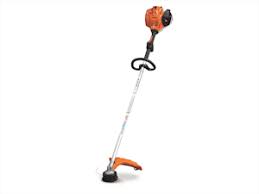Weed Barrier, A weed barrier is an essential tool in landscaping and gardening, designed to control and minimize the growth of unwanted plants and weeds. This simple yet effective solution provides numerous benefits, making it a popular choice for both amateur gardeners and professional landscapers.
What is a Weed Barrier?
A weed barrier, also known as weed fabric, weed mat, or weed control fabric, is a material used to suppress weed growth while allowing air, water, and nutrients to pass through to the soil. Typically made from synthetic materials such as polypropylene or polyester, or natural materials like jute or burlap, weed barriers create a physical block that prevents weeds from emerging.
Benefits of Using a Weed Barrier
- Effective Weed Control: One of the primary advantages of using a weed barrier is its ability to suppress weed growth. By blocking sunlight and restricting the space available for weeds to grow, it effectively reduces the number of weeds that can sprout.
- Reduced Soil Erosion: Weed barriers can help prevent soil erosion by stabilizing the soil. This is particularly beneficial in areas prone to heavy rainfall or on slopes where erosion is a significant concern.
- Conserves Moisture: By covering the soil, weed barriers help retain moisture and reduce evaporation. This can be especially helpful during hot, dry periods, ensuring that your plants receive consistent hydration.
- Improves Soil Health: With fewer weeds competing for nutrients, the plants you want to grow can access more of the soil’s resources. Additionally, some weed barriers are designed to allow water and nutrients to permeate the soil, promoting healthier plant growth.
- Reduces Maintenance: Using a weed barrier can significantly decrease the amount of time and effort needed for weeding. This not only saves you time but also reduces the need for chemical weed killers, making it a more environmentally friendly option.
How to Use a Weed Barrier
- Preparation: Before laying down a weed barrier, prepare the soil by removing any existing weeds and debris. This ensures that the barrier will lay flat and work effectively.
- Laying the Barrier: Roll out the weed barrier fabric over the prepared soil. Overlap the edges of the fabric to ensure that no gaps are left where weeds could potentially grow through. Secure the fabric in place using landscape staples or pins.
- Adding Mulch: For added effectiveness and to improve the barrier’s durability, cover the fabric with a layer of mulch. Mulch not only helps to further suppress weed growth but also enhances the appearance of your garden.
- Maintenance: Regularly check the weed barrier for any signs of damage or gaps. Address any issues promptly to maintain its effectiveness. Additionally, replenish the mulch as needed to ensure continued protection.
Types of Weed Barriers
- Fabric Weed Barriers: These are commonly made from woven polypropylene or polyester. They are durable, allow water and air to pass through, and are effective for long-term use.
- Plastic Weed Barriers: Typically made from polyethylene, plastic barriers are less permeable than fabric options but can be useful in certain applications. They are often used in conjunction with mulch.
- Natural Fiber Barriers: Made from materials like jute or burlap, these barriers are biodegradable and can be a more eco-friendly choice. They break down over time, which may require more frequent replacement.
Conclusion
Incorporating a weed barrier into your gardening or landscaping routine offers numerous advantages, from effective weed control to improved soil health. By selecting the right type of weed barrier and following proper installation techniques, you can enjoy a more manageable and thriving garden. Whether you’re looking to save time on maintenance or enhance the overall health of your plants, a weed barrier is a valuable investment that can make a significant difference in your outdoor space.
You Might Also Like These:



